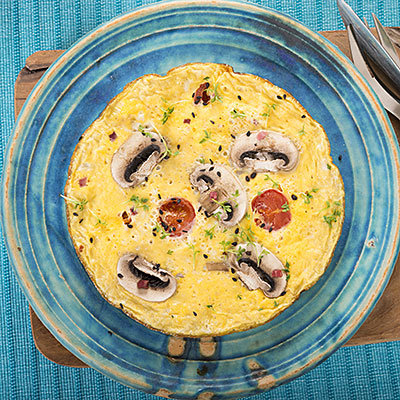Top history of African mango
first study, Ngondi and her team (2005), evaluated the effects of an extract of Irvingia gabonensis seeds on corpulence and blood pudgy levels.Forty portly Cameroonian subjects with a BMIexceeding 25 and an average age of 42 years, were randomly divided into two groups.
One classify group of received 3 x 350 mg tablet of the African mango seed extract 3 times a part of day half an hour before meals.the total intake of the African mango edible seed extract was 3.15 g per day.
The control group of Twenty-eight subjects received the same doses of capsule include oat bran.
All the topic ate the same so-called high-protein normocaloric diet the energy content of the diet was not decreased and was, therefore, not held responsible for any weight changes.The treatment lasted for 4 weeks.
The upshot of this first study showed that on estimate, the care group lost almost 5.3% of their body avoirdupois, while the care group only lost 1.3%, which represents a significant distinction in weight loss between the two groups.
At the same time, "good" HDL cholesterol levels in the group receiving African mango, increased by 46.9%. The treatment group also experienced a significant decrease in blood glucose levels.
vital decrease in total blood cholesterol (39.2%), triglycerides (44.9%) and "bad" LDL cholesterol (45.6%), were attain in the treatment group.
No significant changes in blood obese or blood sugar levels were observed in the care group after the month long test time period (Ngondi, 2005).
In 2009, Ngondi and her colleague from the institution of Yaounde in Cameroon, repeated their study with 102 healthful, plump or portly volunteers using IGOB131, a novel seed extract ofIrvingia gabonensis.
The topic were separate in to a treatment and a control group.all topic received 150 mg of IGOB131 or placebo, 30-60 minutes before lunch or dinner for 10 weeks.
congruous optimistic results were obtained with the IGOB131 seed extract and the treatment group lost more weight, had improved blood fat and glucose values, lower blood pressure, and other markers of the metabolic syndrome (e.g. lower leptin levels).
The authors suggest that the extract of Irvingia gabonensis may be a useful tool in dealing with the emerging global epidemic of obesity, hyperlipidaemia, insulin resistance and associated diseases (Ngondi et al, 2009).
Ethnomedicinal care treatments utilize the leaves,plants, bark on trees, kernels, or roots for a variety of ailments.
The bark on trees is assorted with vegetable oil for treating diarrhea and for reducing the breast-feeding period.
The bark over trees of the are consumed by mouth to treat hernias, yellow fever, and dysentery, and to reduce the effects of poison in French Equatorial Africa.
The antibiotic quality of the bark help better heal scabby dermis, and the boiled bark relieves tooth pain.
In definite parts of Africa, the bark extract is ingested to produces an analgesic effect. The powdered kernels act as an astringent and are also applied to burns. The stems of the tree have been used as chewing sticks to help clean teeth.
The African mango are classified as oilseeds. The edible seeds into a paste, also known as dika bread, which is valued for its food-thickening quality. The outcome product is used in soups, stews, or sauces. The fat extracted from the kernel is similar to margarine or cooking oil. Flour may also be produced from the kernels.
countless studies exist on the ability industrial application of African mango in food, cosmetic, and pharmaceutical products.
Agroforestry initiatives on phenotypic variation,
amino acid profile,
soil conditions,
economic potential
of the tree species document additional commercial interest. The oil from the kernel may act as a binder in food or pharmaceutical products 18 or as an industrial gum.
The pulp is used for making jelly, jam, and juice and is consumed as a dessert throughout western and middle Africa. The leaves are used as food for livestock by farmers. The wood is used for making walking sticks and supports for thatched roofs.
Related Articles
-
The Origins Of The Acai Berry
Overview The powerful attributes of the acai fruit is a positive ef
-
Weight Loss Tips For Powerful Living
When you truly consider the weight loss process, the battle waged is m
-
Fat Burning Furnace - Simple Cheap Diet without High Costs!
Learn How to Lose 26 Pounds in 7 Weeks! Simple Cheap Diet without High
-
fasting-and-fat-loss
Every year at this time I watch as my Jewish clients observe Yom Kippu
-
7 Tips to Help You Beat Your Sugar Habit
Are you often overcome with an urge to splurge on ca
-
Top Rated Herbal Slimming Pills For Men And Women Helps In Weight Loss
Everybody wants to stay fit and slim and this is the reason it is hig
- DON'T MISS
- A Collection of Prodotti Dimagranti or Slimming Products to Help You Lose Weight
- Exercise and Low Carb Diets Make Poor Partners
- How To Drop Your Weight and Become Healthier Using These 7 Everyday Life Tips
- Avoid any food that increases the fat deposits!
- Dr. Oz Answers Lawmakers on Weight Loss Tips
- How To Lose Weight And Keep It Off? It Is Simple
- incinerador de grasa free download
- Six Steps to Weight Loss Success
- The Missing Link for an Effective Exercise Program
- Weight Loss Exercise For Men - Baby Fat Burner




